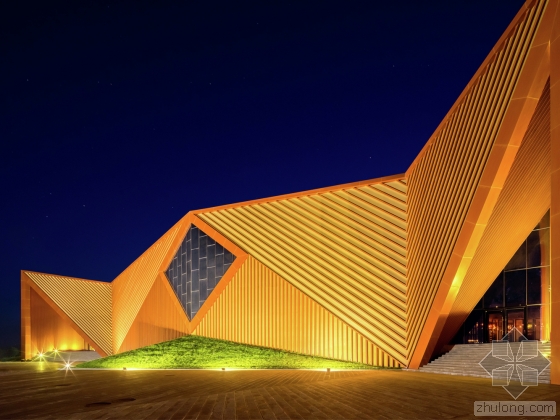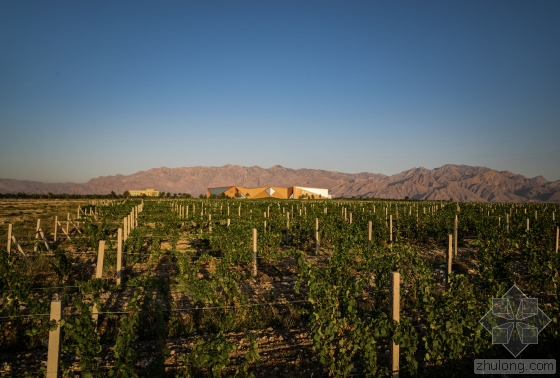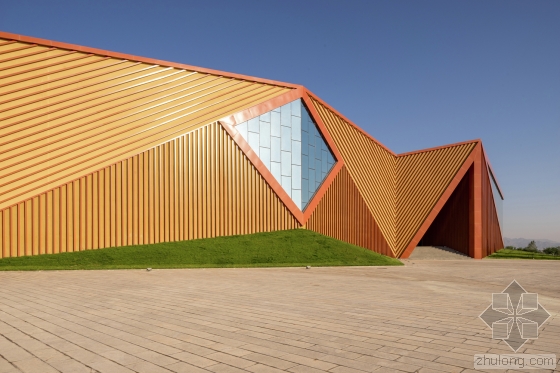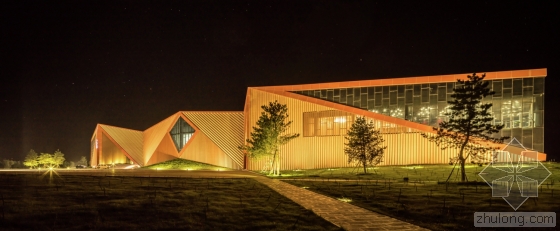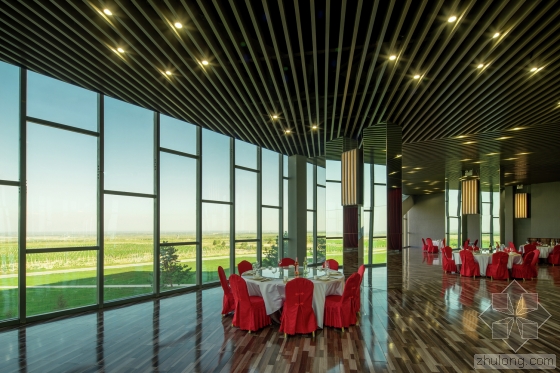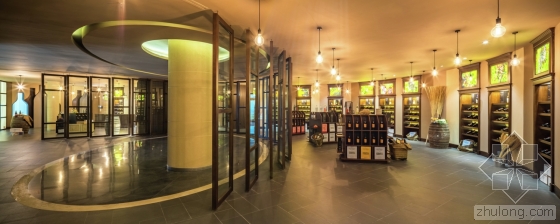银川长城云漠酒庄
银火教育重庆建筑设计培训介绍:Yinchuan Great Wall Cloud Desert Winery设计方:a+aAnderloni Associates位置:宁夏分类:商业建筑内容:实景照片图片:14张摄影师:Nathaniel McMahon
标签:商业建筑实景照片这是由a+aAnderloni Associates设计的长城云漠酒庄。长城酒业是中国最著名的酒类品牌,其酒庄基地遍布中国。得益于对酒庄建筑的深入研究,2012年,a+a主持设计新的长城酒庄,该酒庄位于宁夏省,这里以葡萄种植为当地经济文化发展特色,因此也被誉为东方波尔多。设计概念源于当地景观:用地东侧为葡萄园区,西侧由分割宁夏省及戈壁沙漠的贺兰山脉所环绕。
最后建筑师创建了割裂分离的建筑立面,完美地贴合于这美丽的自然环境。建筑立面由彩色混凝土的石膏墙体以及受葡萄园区形状启发生成的矩形平行金属型材装饰而成。立面上通过三道巨型开窗连通了室内外空间,就像屋顶的景观平台,游客从这里可以获得360度的景观体验,一览葡萄园区、贺兰山脉以及宁夏陵墓的风景。除此之外,该项目也是一座环保节能建筑。建筑内外两层表皮间打造的“缓冲空间”,为使中心功能区提供最佳保护,而双层表皮间的距离由两端到中心逐渐变大,同时让大厅和走廊等交通联系区域也能获得良好的节能效果。
译者:筑龙网艾比
From the architect. Great Wall is the most famous Chinese wine brand and it has wineries all over China. Thanks to a specific experience on wine architecture, in 2012 a+a was in charge to design the new Great Wall Winery in NingXia province, where viticulture plays a big role in the local economy and culture, so much that is often called the Chinese Bordeaux.
The design concept began from the landscape: the plot area is surrounded by vineyards on East side and by Helanmountains on West side, that separated NingXia province from the Gobi desert.The result is a broken outline facade that perfectly lays on the beautiful lunar landscape. The facade is composed by a wall with a colored concrete plaster finishing and decorated with rectangular section metal profiles, placed in parallel lines inspired by the vineyards shape. Three big glass openings permit to natural light to come in and also give a permeability feeling and a strong visual connection with the landscape, that is possible also from the roof where from a sightseeing terrace is possible a 360degrees observation of the entire area, including vineyards, Helan Mountains and Ning Xia Imperial Tombs.
Yunmo Winery is also a energy and costs saving building, thanks to a "buffer space" between the outer facade and the inner one. In fact the distance between the two facade layers increase from the ends to the center in order to have the best protection for the daily usage areas, but save energy in the fast transit spaces like lobbies and corridors.
Despite to the irregular facade, the interiors layout is rational and designed for the best flows organization possible, in order to properly connect this mixed functional program (lobby, shops, restaurant, office, exhibition space, main cellar, private cellars and tasting rooms).The design of the lobby was driven by two main aims: the first was to show from the entrance a corporate identity related to the wine architecture function, the second one was not to lose the connection with the landscape and natural elements. So the main actor of the lobby is a big scale wood installation inspired by the barrel shape. It is a skylight that brings natural light from the roof to the pool at the ground floor, that is a skylight too and gives a special light effect to the cellar at the B1.
The Restaurant is totally absorbed by the landscape: in fact the big glass openings bring the visitors straight to the vineyards, also thanks to mirrored clad columns. They work both like a sight multiplier, and also, thanks to the reflection effect, as a landscape decomposition tools. The result is a dynamic space where, sitting at any restaurant table, the visitor can enjoy all the spots possible, even the ones out from his eyes trajectory.
The Cellar is a "mysterious" space, like the basement of an old manor. In the cellar lobby the natural light filter filters through the pool at the ground floor, producing a surreal light effect. The barrel are placed all around the room, like a roman circus, with the light at the center of the stage. The cellar storage is designed like a modern industrial cathedral, with a high central nave to walk observing the barrel, with a site specific light design. The different proportion of the spaces (the B1 lobby has a circular plan, while the cellar is a long rectangle) and their play of different heights gives a mystique feeling of the wine aging process. Metal, cement, red curtains, dark brown paint, will be very helpful to achieve the desired atmosphere.
